Internet Innovation Forum to be held in Beijing on 6th November
2010-10-11 12:06
With the aim to promote the understanding and awareness of the Internet innovative idea and successful model of the IETF experiences by the academic and Internet communities of China, Internet Society of China and Tsinghua University will jointly organize the Internet Innovation Forum & 2010 CNGI Engineering Technology Forum (CNGI-ETF 2010) in Beijing, China on 6th November.
By leveraging the IETF 79 event which will be firstly held in Beijing this November, the forum will invite IETF experts to introduce the IETF experiences and the emerging trends on the future Internet. Meanwhile, the Chinese experts from internet societies and academic institutes will be invited to introduce internet development and trends in China on this forum.
We would like to invite IETF 79 participants and Chinese experts from internet enterprises, institutes and all the stakeholders to join this forum to enhance the exchange on internet innovation through this platform.
The participation in the event is free of charge, and if you are interested in attending the forum, Please send email with your personal information (name, company, title) to zhaoy@isc.org.cn to get confirmation before 25th October, 2010.
More Info please visit:https://www.isc.org.cn/technology/index.html
Contact person:
Ms.Zhao Yao
Secretariat, Internet Society of China
TEL: +861066036758
Mobile: +8618600060355
Email: Zhaoy@isc.org.cn
Bios of Speakers:
1. Hu Qiheng
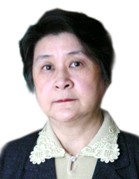
Hu Qiheng is the President of the Internet Society of China, the former Vice President of China Association for Science and Technology, Director of the Working Committee of China Internet Network Information Center(CNNIC), Academician of Chinese Academy of Engineering, Research Fellow of Chinese Academy of Sciences and Member of Expert Advisory Committee for China’s State Informationization. Madam Hu graduated in 1963 from the Graduate Section of Moscow Institute of Chemical Machinery, where she got her Associate Doctorate Degree in Technological Science. In 1995 Hu was elected as a foreign academician by the Academy of Sciences of Ukraine. And she has held various administrative posts such as Vice President of Chinese Academy of Sciences, Chairperson of China Computer Federation and Chairman of Chinese Automation Association.
As one of the earliest explorers in the field of pattern identification and artificial intelligence in China, Madam Hu has led the construction of China’s first national key laboratory in this field. And since 1990, Madam Hu has taken the lead in the World Bank Financed Project NCFC (exemplary education and scientific research network of Zhongguancun area), and she has played an important role in the development of Internet in China as well as the international exchange and cooperation in the related fields.
2. Wu Hequan
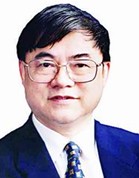
Wu Hequan, the director-general of China Institute of Communications,an expert in optical fiber transport network and broadband information network, was born in January 1943, in Guangzhou city. He graduated from Department of Wireline Communications, Wuhan Institute of Post and Telecommunications, Wuhan, China in 1964. He was Vice-President and Chief Engineer of China Academy of Telecommunications Technology (CATT) during 1997-2003. He was in charge of studies on the development strategies on NGI and 3G as well as LTE recently. He was elected an Academician of the Chinese Academy of Engineering (CAE) in 1999 and has been Vice-President of CAE since June 2002. He is currently assigned as Vice-Director of Advisory Committee for State Informatization of China. He is Vice-Director of Executive Council of China Institute of Communications (CIC) and Chinese Institute of Electronics (CIE), respectively. He is a member of Advisory Committee of National Basic Research Program of China (973 Plan) and is Director of Experts Committee of China’s Next Generation Internet (CNGI) project. He is appointed as the technical director of the new generation broadband wireless mobile communications network, one of the 16 major projects in the Outline of the National Program for Long- and Medium-term Scientific and Technological Development (2006-2020) of China. He is a senior member of IEEE.
3. Wu Jianping
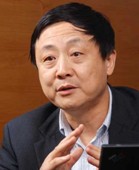
Wu Jianping is the Professor of Computer Science and director of Network Research Center, Tsinghua University. And he is also the Vice-President of Internet Society of China.
From 1994, he has been in charge of China Education and Research Network (CERNET) which is the largest academic network in the world as a director of both Network Center and Technical Board. From 2003, he has been in charge of CERNET2 which is the largest backbone of China Next Generation Internet project (CNGI).
He is a member of Information Advisory Committee, Office of National Information Infrastructure, Secretariat of State Council of China, and is also a vice president of Internet Society of China (ISC) . He is vice chair man of APAN and will be a chair man of APAN from August, 2006 . He was an AC of ICANN-ASO from 1999 to 2001.
He had served as chairman or program committee member for many international conferences, such as chairman of FORTE/PSTV"1999, and program committee member of INFOCOM"2002, ICNP"2001 and 2006 , FORTE/PSTV"1995-2003 and TESTCOM" 1995-2006 etc. His area of specialization includes high speed computer network, Internet and its applications, network protocol testing and formal method. More than 200 papers have been published in the academic journals and proceedings of international conferences.
He was presented with Jonathan B. Postel Service Award 2010 by the Internet Society (ISOC) in 2010 for the pioneering role he has played in advancing Internet technology, deployment, and education in China and Asia Pacific over the last twenty years.
4.Jiang Lintao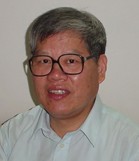
Jiang Lintao is chief engineer at the China Academy of Telecommunication Research, in the Ministry of Industry and Information Technology. He also servers as chairman of the IP & Multimedia Standard Working Group of China Communications Standardization Association, vice chairman of ITU-T SG 13, and member of the 1st, 2nd and 3rd sessions of Multimedia Expert Group of Communication Technology Area of the National High Technology Research and Development Program ("863"Program). He has been engaged in R&D and standardization of multimedia, digital communications, and IP technologies for many years. He has received a special government allowance since 1992, and was awarded "Youth Science & Technology Expert with Significant Contributions" by the Chinese government in 1996.
5.Tony West 
Tony West is Vice President of Connected Architecture in the Office of the CTO at Cisco, where he drives technical alignment across the company"s strategies and architectures to produce an integrated end-to-end network platform.
West has more than 30 years of experience in the information technology industry, starting with research in local networks and protocols, to managing engineering teams developing network-based workstations and servers, to defining and managing IT and services architectures for large-scale global enterprises. West has led a number of industry standards efforts around open systems software technologies.
Prior to joining Cisco, West was the Vice President and Chief Technology Officer for Global Services at Sun Microsystems, where he defined services technology for supporting an installed base of over 2 million installed customer systems, and led the way to a pre-emptive service model using network-based expert system technology. West was with Sun for 23 years and held various other roles in corporate strategy, IT, field marketing, and engineering. Prior to Sun, West worked in research at Xerox PARC and IBM Research.
West has always been interested in how to leverage network technology to create new opportunities. As the internet evolves and organizations are building new, cloud-based scalable IT platforms, West is helping to find ways to build and deliver next-generation application services via the network to address the challenges of the growing and mobile world of tomorrow.
West holds a B.Sc. degree in Computing & Cybernetics from the University of Kent, UK, and a Ph.D. in Networking & Computer Science from Queen Mary College, London University, UK.
6. Russ Housley

Russ Housley is the Founder of Vigil Security, LLC, and he is coauthor of Planning for PKI and Implementing Email and Security Tokens, published by John Wiley & Sons. He has over 25 years of communications and computer security experience. For four years, he served as the Security Area Director for the Internet Engineering Task Force (IETF), and he is presently serving as Chair of the IETF. His expertise is in security protocols, system engineering, system security architectures, and product definition. He is the author of the Cryptographic Message Syntax (CMS), the security foundation for S/MIME. He is one of the authors of the Internet X.509 Certificate Profile (RFC 5280), commonly called PKIX Part 1. He is one of the authors of the SDNS Message Security Protocol (MSP), the security cornerstone of the U.S. Defense Message System (DMS). He contributed to IEEE 802.11 Wireless LAN security standards, particularly IEEE 802.11i.
7. Fred Baker

Fred Baker was IETF chair from 1996 to 2001, He has been active in the networking and communications industry since the late seventies, working successively for CDC, Vitalink, ACC. He is currently a Fellow at Cisco Systems.
He has chaired a number of IETF working groups, including Bridge MIB, DS1/DS3 MIB, ISDN MIB, PPP Extensions, IEPREP, and IPv6 Operations, and served on the Internet Architecture Board 1996-2002. He has co-authored or edited around 40 RFCs and contributed to others. The subjects covered include network management, OSPF and RIPv2 routing, quality of service (using both the Integrated services and Differentiated Services models), Lawful Interception, Precedence-based services on the Internet, and others. In addition, he has served as a member of the Board of Trustees of the Internet Society 2002-2008, having served as its chair from 2002 through 2006. He is also a former member of the Technical Advisory Council of the Federal Communications Commission.
He currently co-chairs the IPv6 Operations Working Group in the IETF, and is a member of the Internet Engineering Task Force Administrative Oversight Committee.
8. Robert M. Hinden

Robert M.Hinden holds an B.S.E.E., and a M.S. in Computer Science from Union College, Schenectady, New York.
Mr. Hinden is Director of Software at Ipsilon Networks, Inc. of Mountain View , California. Ipsilon Networks is a startup working in the area of high performance internetworking and ATM. Mr. Hinden was previously employed at Sun Microsystems where he was responsible for the department which develops internet protocols for Sun"s operating systems. Prior to this he worked at Bolt, Beranek, and Newman, Inc. on a variety of internetwork related projects including the first operational internet router and one of the first TCP/IP implementations.
He has been active in the IETF since 1985 and is currently the document editor for the IPng working group and a member of the IPng Directorate. He served as the Area Director for Routing in the Internet Engineering Steering group from 1987 to 1994 and previously co-chaired the Simple Internet Protocol Plus working group and chaired the IP over ATM and the Open Routing working groups.
9. Ross Callon
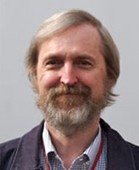
Ross Callon is a distinguished engineer in the routing software group at Juniper Networks and is routing area director of the IETF. He is former co-chair of the Operational Security Capabilities (OPSEC) and Layer 3 Virtual Private Network (L3VPN) working groups. He is co-author of the L3VPN Framework document (RFC4110), and contributor to the PPVPN Security Framework (RFC4111).
Ross has been participating in IETF meetings since the first IETF, and has worked on a variety of routing and standards issues over that timeframe. In the past he was co-chair of the IS-IS working group and also was area director for the OSI area of the IETF. He is co-author of RFCs 3212, 3031, 2185, 1925, 1629, 1347, and 1195. He also has been co-chair of Network Reliability and Interoperability Council 6, Focus Group 2, advising the Federal Communications Commission (FCC) on reliability issues in Data networks. He was editor for FCC/NRIC document on outage reporting. He was also chair of NRIC5 FG2 advising the FCC on interoperability issues. He has worked on high speed router and routing protocol design. He has an M.Sc. in Operations Research from Stanford University and a B.Sc. in Mathematics from the Massachusetts Institute of Technology.
10. Radia Perlman
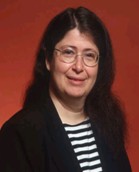
Radia Perlman is a software designer and network engineer sometimes referred to as the "Mother of the Internet". She is most famous for her invention of the spanning-tree protocol, while working for Digital Equipment Corporation, which is fundamental to the operation of network bridges. She also made large contributions to many other areas of network design and standardization such as link-state protocols, including TRILL, which she invented to correct some of the short-comings of spanning-trees. She obtained a Bachelor"s, Master"s in Mathematics, and a Ph.D. in Computer Science from MIT . Her doctoral thesis at MIT addressed the issue of routing in the presence of malicious network failures and forms the basis for most of the work in this field. Perlman is the author of one textbook on networking and coauthor of one textbook on network security. She is currently employed by Intel. She holds more than fifty patents from Sun alone.
Radia Perlman is an Intel Fellow and director of Network and Security Technology in Intel Labs. Perlman joined Intel in 2010 and focuses on Intel Labs" leadership in network and security. She provides strategic direction for future network, security and trusted platform research. Prior to joining Intel, Perlman was with Sun Microsystems, where she was a Sun Fellow.
Perlman is the inventor of many fundamental technology innovations in computer networking, including the spanning tree algorithm, which is at the heart of today"s Ethernet; TRILL, an emerging standard for data center interconnection that can replace today"s spanning tree Ethernet; and scalable and robust link state routing technology that is key to the operation of today"s Internet. Her design for DECnet routing became standardized by ISO as the IS-IS protocol, which is deployed in many ISPs, and is the basis of the IETF"s TRILL standard.
Perlman is also responsible for many innovations in security, including assured delete of data, distributed algorithms robust despite malicious trusted components, and usable trust models for PKI. Perlman has authored two networking textbooks, widely used in both universities and industry; written 20 technical papers; and holds about 100 patents.
Perlman has been recognized with numerous industry awards including an honorary doctorate from KTH Royal Institute of Technology in Sweden, the Usenix Association lifetime achievement award, Silicon Valley Inventor of the year in 2004 and the Women of Vision Award for Innovation in 2005. Perlman received her bachelor"s and master"s degrees in mathematics, and a Ph.D. in computer science from the Massachusetts Institute of Technology (MIT).
11. George Swallow

George Swallow is the Co-Chair of the IETF"s Working Group on Multiprotocol over Label Switching. He is a Distinguished Engineer at Cisco Systems where he is a member of the architecture team for Label Switching. He defined Cisco"s architecture for applying MPLS to the problem of traffic engineering and fast reroute. Recently he has been involved in point to multi-point traffic engineering and in developing protocols for monitoring and diagnosing MPLS networks and MPLS based network applications.
Prior to Cisco, George was employed by BBN. There he was involved in the design, deployment, and analysis of over 50 operational networks, including the Arpanet. This work involved extensive statistical measurement and analysis to investigate both network and protocol behavior. He was also involved in the design of packet and ATM switches. While at BBN, he held a number of positions ranging from Senior Network Analyst to Director of Network Engineering. He has been participating in the design and standardization of Internet & ATM standards since 1991.
George holds a MS in Mathematics from Northeastern University and a BA in Mathematics from the University of Virginia.
12. Brian Carpenter
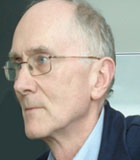
Brian Carpenter spent 10 years writing software for process control systems at CERN, which was interrupted by three years teaching undergraduate computer science at Massey University in New Zealand.
He led the networking group at CERN, from 1985 to 1996. He worked alongside Tim Berners-Lee, who invented the World Wide Web, while at CERN.
When he left CERN, he joined IBM, where he was an IBM Distinguished Engineer working on Internet Standards and Technology. From 1999 to 2001 he was at iCAIR, the international Center for Advanced Internet Research, sponsored by IBM at Northwestern University in Evanston, Illinois. Upon leaving iCAIR, he was based in Switzerland, first Zurich, then Geneva.
In September 2007, he left IBM for academia, and is now teaching data communication at The University of Auckland.
Brian Carpenter has worked on IPv6 and on Differentiated Services, being chair of the DiffServ working group. He served from March 1994 to March 2002 on the Internet Architecture Board, which he chaired for five years. He also served as a Trustee of the Internet Society, and was Chairman of its Board of Trustees for two years until June 2002. In March 2005 he became IETF Chair, a position he held until March 2007.
13. Adrian Farrel
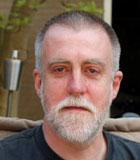
Adrian Farrel is one of the two IETF Routing Area Directors where his responsibilities include the MPLS Working Group and the MPLS-TP design team. Previously he was co-chair of the IETF"s Common Control and Measurement Plane (CCAMP) Working Group, which is responsible for the development of the GMPLS family of protocols. He also chaired the Path Computation Element (PCE) Working Group, which is applying remote path computation techniques to MPLS and GMPLS networks, and the Layer One VPN (L1VPN) Working Group, which developed mechanisms to manage connectivity over optical networks using GMPLS. He was a founding board member of the MPLS Forum, he is a regular attendee at ITU-T meetings that discuss the optical control plane and MPLS-TP, and he regularly serves on the technical committees for MPLS and GMPLS conferences.
Building on his 20 years" experience designing and developing communications software, Adrian runs a successful consultancy company, Old Dog Consulting, providing advice on implementation, deployment, and standardization of Internet Protocol-based solutions, especially in the arena of MPLS and GMPLS.
As well as frequently speaking at conferences, giving tutorials on MPLS and GMPLS, and authoring several papers on GMPLS and path computation, Adrian is the author and editor of five books on Internet protocols.
14.Tony Li
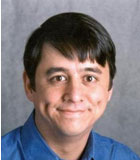
**********************************************************************************************
(Chinese Version)
互联网技术创新和产业发展论坛11月6日在京召开
2010年11月7月至12日,第79届IETF(互联网工程任务组)大会将在北京举办,这是IETF首次在我国内地举行例会。届时,众多国际知名的互联网各有关技术领域的专家、多项互联网技术的创始人将云集北京参加本次会议,共同讨论互联网最新技术标准相关研发和制定。
为加强我国互联网界与国际互联网界的交流,让我国互联网技术相关人员了解到互联网最新技术发展及标准制定情况,从而更好推动我国互联网技术创新发展,借第79届IETF在京举办的契机,中国互联网协会和清华大学将于2010年11月6日在京联合举办“互联网技术创新和产业发展论坛”。邀请部分参加79届IETF会议的互联网专家与中国互联网研究人员、技术人员、管理人员进行交流,回顾互联网技术、标准的发展历程,探讨互联网技术对产业发展的影响。
我们诚挚地邀请互联网研究人员、互联网企业技术专家、教育界专家、高校师生等出席本次论坛。参加会议不收取任何费用,如请有意参加者在2010年10月25日之前,将报名回执发至我会。名额有限,欲报从速。
更多详情,请见官方网站:https://www.isc.org.cn/technology/index.html
参会报名联系:
Email:yn@isc.org.cn
中国互联网协会
二〇一〇年十月十一日

